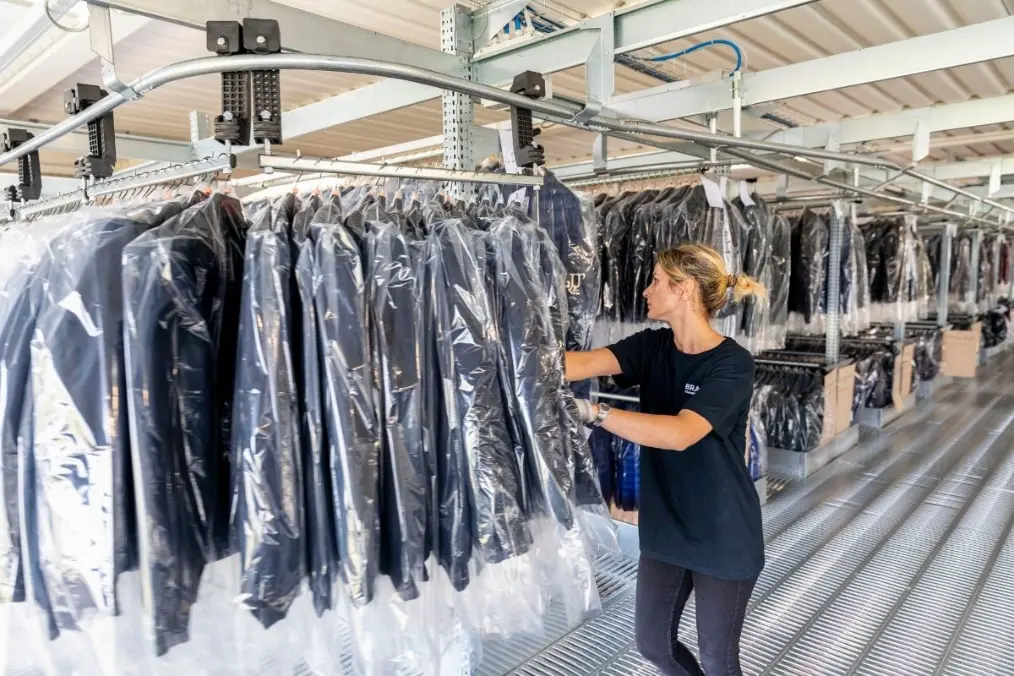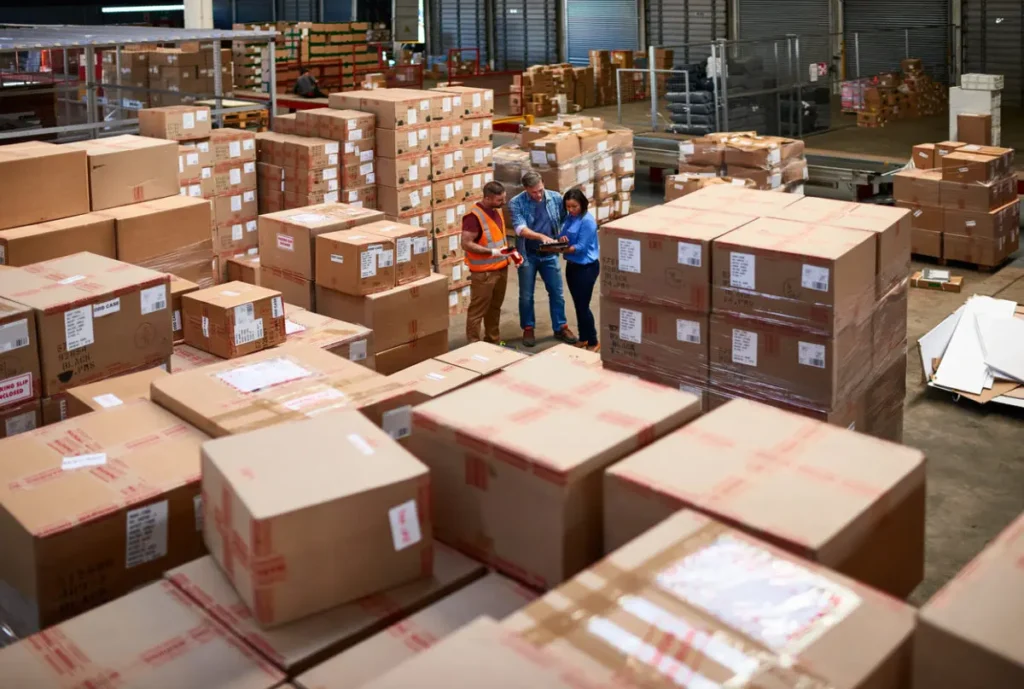Every item of clothing we own has a backstory sewn right into it, one that goes much beyond its outward look. A complicated labor, economics, and production journey occurs behind the well-pressed collars, precisely stitched seams, and well-selected patterns.
To fully comprehend the cost to make a shirt, one must explore a complex network of factors, including labor wages, raw materials, manufacturing methods, shipping, and retail markups.
So, in this article, we’ll go over different factors influencing the cost of making shirts, along with some other information you might find helpful.
How Much Does It Cost to Make a Shirt?
The production of shirts involves many intricate components that interact to determine the ultimate cost of the item. The cost of materials, which forms the basis of each shirt’s production, is the primary figure in this computation. Much of this cost depends on the fabric selection, ranging from simple cotton to opulent silk or linen.
A garment could range from $2 to $5 for basic materials to $10 or more for luxury fabrics. Another significant component of the total cost is labor. Depending on where the shirt is made, the price of the skilled labor required to cut, stitch, and assemble it can differ significantly.

Labor costs for a shirt might be as low as $1 to $3 in lower-cost labor locations like parts of Asia, but they could reach $5 to $10 or higher in higher-wage nations like the US or Western Europe. Typically costing $1 to $3 per shirt, overhead includes facility rent, utilities, machinery upkeep, and administrative wages.
Transportation and logistical costs are also essential, mainly when producing and distributing internationally. Shipping charges can add many dollars to the total cost of a garment when moving supplies or completed goods across long distances.
Additional costs associated with packaging include plastic bags, cardboard boxes, and labels; these materials usually cost between $0.50 and $1 per shirt. Marketing and distribution costs also influence the total price, which includes retailer margins, sales commissions, and advertising. These costs vary significantly according to the methods and channels selected.
These costs can be as little as a few dollars for internet sales made directly to customers or as much as several thousand dollars for traditional retail distribution. Taxes, customs charges, quality assurance procedures, and other unanticipated expenditures complete the picture and may add $1 to $2 for each shirt.
Altogether, the total cost of creating a shirt spans a broad spectrum, ranging from roughly $6 to $25 or more per unit, depending on various elements such as supplies, labor, location, and production scale.
11 Factors Influencing the Cost of Making Shirts
Numerous variables affect the cost of producing shirts, including labor costs, material choices, manufacturing volume, overhead costs, and market conditions. So, now, let’s go over the essential factors that shape the cost of producing shirts, shedding light on the complexities of the industry:
1. Production Volume
When calculating the cost of manufacturing shirts, economies of scale are crucial. Higher production volumes usually result in lower costs per unit because fixed expenditures, such as setup and depreciation on gear, are distributed over a more significant number of units.
Manufacturers frequently provide discounts for bulk orders to encourage businesses to undertake larger production runs. On the other hand, lower production volumes could result in more significant costs per unit because of inefficient setup and use of the production process.
2. Material Selection
The cost of producing shirts is determined mainly by the fabric selection. The fabrics’ quality, composition, and cost differ, offering anything from standard cotton to opulent silk and high-tech synthetics.

Cotton is available in several grades and is among the most popular materials, with prices varying according to thread count, fiber length, and country of origin. Furthermore, manufacturing prices may increase due to specialty textiles or blends with distinct qualities.
3. Labor Costs
One of the highest costs in the creation of clothing is labor. The location of manufacturing has a substantial impact on labor costs.
Factories in nations with lower labor costs, like Vietnam or Bangladesh, might provide competitive pricing compared to locations with higher wages, such as the US or Europe. Moreover, skilled labor is more expensive overall in manufacturing because you need it for jobs like pattern-making, cutting, sewing, and quality monitoring.
4. Technology & Automation
The clothing manufacturing business has revolutionized due to technological advancements and automation, affecting production processes and costs. Automated machinery and computerized systems can decrease production costs, increase productivity, decrease workforce needs, and minimize errors.

However, when assessing cost reductions over an extended period, one must consider the original investment in adopting new technology and continuing maintenance costs.
5. Overhead Expenses
Various indirect costs related to production, such as rent, utilities, administrative expenditures, and equipment maintenance, are included in the category of overhead expenses.
The distribution of these costs throughout the production output affects the price per unit of shirts. Effective overhead cost control is crucial for enterprises to stay profitable and competitive.
6. Quality Standards & Compliance
Meeting quality standards and regulatory compliance requirements is crucial in the garment sector. Manufacturers must abide by labor laws, quality control procedures, and product safety requirements to guarantee their products’ integrity and safety.

While they raise the total cost of production, compliance-related costs like certifications, audits, and inspections are necessary to preserve consumer confidence in a brand.
7. Supply Chain Complexity
The price of producing shirts might vary greatly depending on how complicated the supply chain is. A well-organized and effective supply chain shortens lead times, lowers inventory costs, and enables prompt delivery of components and supplies.
On the other hand, a disjointed or ineffective supply chain might jeopardize production schedules and expenses by exhibiting quality problems, delays, or transportation bottlenecks.
8. Quality Standards & Compliance
Meeting quality standards and regulatory compliance requirements is crucial in the garment sector. Manufacturers must abide by labor laws, quality control procedures, and product safety requirements to guarantee their products’ integrity and safety.
While they raise the total cost of production, compliance-related costs like certifications, audits, and inspections are necessary to preserve consumer confidence in a brand.
9. Market Dynamics
The market dynamics, including changes in demand, rivalry, and pricing pressures, significantly impact shirt manufacturing costs. To be competitive, manufacturers need to adjust to shifting market conditions by striking a balance between pricing strategies and manufacturing costs.
Aside from customer tastes and fashion trends, geopolitical events can also affect the pricing and availability of materials, affecting production costs.
10. Transportation & Logistics
The logistics and transportation required to find supplies and deliver completed shirts can greatly influence manufacturing costs. Several variables influence transportation costs, including distance, shipment options, customs charges, and fuel prices. To save money on transportation, manufacturers can work with nearby suppliers or use bulk contracts to bargain for affordable delivery.

Effective logistics management can further streamline supply chain operations and decrease transportation costs, including inventory optimization and route planning. Therefore, you require proactive risk management techniques since changes in fuel costs or interruptions in international logistics networks may present difficulties and cause cost swings.
11. Currency Fluctuations & Exchange Rates
Due to currency changes and exchange rate volatility, producers may face difficulties sourcing materials or selling shirts in foreign markets. Changes in the exchange rate between the sales and production currencies can affect profit margins and price competitiveness.
However, to lessen the impact of fluctuations in exchange rates, manufacturers can modify their pricing strategy or use financial instruments as a hedge against currency risks.
Furthermore, currency values are subject to the influence of geopolitical events, economic indicators, and central bank policies. As such, it is imperative to continuously analyze and modify risk management methods to mitigate detrimental effects on production costs and profitability.
Is It Profitable to Sell Custom-made Shirts?
Selling custom-made shirts can be profitable if custom shirt sales are adequately tackled and done with a thorough understanding of the industry and production process. Now, let’s go over the main factors to take into account and the reasons why customized shirts might be profitable:
Higher Perceived Value
Custom-made shirts provide clients with a distinctive product that is suited to their tastes and provides a personalized experience. Compared to mass-produced, off-the-shelf shirts, this higher perceived value enables premium pricing, which may result in better profit margins.
Reduced Inventory Costs
Custom shirts are made-to-order instead of ready-to-wear shirts, which you must keep in stock in various sizes and styles. It improves profitability by lowering inventory expenses related to markdowns, surplus stock, and storage.
Targeted Marketing Efforts
Custom-made shirt sales provide focused marketing campaigns directed at particular clientele groups. Sellers can more successfully contact and engage their target audience with marketing messages and techniques tailored to their tastes, lifestyle, and fashion sensitivities. It will enhance conversion rates and profitability.

Ability to Charge Premium Prices
Customers are frequently ready to pay a premium for them because of the unique designs, superior craftsmanship, and customized fit of custom-made shirts. Because of this, vendors can demand better pricing, which boosts sales and profitability.
Lower Production Costs
Because of the customization process, custom-made shirts may need more work, but they may also use less material. Sellers can increase profitability by reducing material waste and optimizing resource utilization by only creating shirts when orders are received.
Brand Loyalty & Repeat Business
Providing bespoke clothing promotes repeat business and increases consumer loyalty. Customers who are happy with a brand are more likely to suggest it to others and return for more purchases, which eventually boosts profitability and creates a consistent flow of income.
Diversification of Offerings
Tailor-made shirts offer a chance to expand product lines and satisfy specific clientele or market niches. Offering customization options like fabric selections, collar designs, cuff styles, and monogramming allows vendors to reach a wider audience and increase revenue possibilities, which boosts profitability.

Operational Efficiency
Investing in automated cutting equipment, digital pattern-making software, and streamlining customization can lower manufacturing costs and increase operational efficiency. Through process optimization and reduction of manual labor, sellers can enhance their output and financial gain.
Online Sales Channels
Custom-made shirt companies can increase their reach through digital marketing and e-commerce platforms. Sellers can increase revenue, reach a worldwide consumer base, and cut expenses related to operating physical locations by using online sales platforms.

Continuous Innovation
Staying ahead of market trends and continuously innovating in design, materials, and customization options is essential for long-term profitability. By offering unique and innovative products that resonate with customers, sellers can maintain a competitive edge and sustain profitability in a dynamic market environment.
How Can You Save on Shirt Costs
Reducing your company’s shirt manufacturing expenses is crucial to increasing profits without sacrificing product quality. The following are some strategies to think about:
Bulk Material Purchasing
Bulk purchases of threads, fabric, buttons, and other supplies can drastically lower unit prices. To take advantage of group buying power, join purchasing cooperatives or bargain with suppliers for discounts based on larger orders.

Lean Manufacturing Techniques
Utilize lean manufacturing concepts to streamline operations and get rid of waste. It entails standardizing protocols, streamlining workspaces for optimal efficiency, and consistently enhancing workflow to minimize production expenses and times.
Efficient Design
Simplify shirt designs to reduce unnecessary material use and production time. Minimize the number of tiny embellishments, intricate patterns, or overstretched areas that might lead to higher labor costs. Streamlined designs employ less material and increase production efficiency at the same time.
Quality Control
Put strict quality control procedures in place to reduce errors and rework, which can raise manufacturing costs. Putting money into quality assurance procedures upfront ensures customer satisfaction, reduces costly mistakes, and lessens the need for expensive rework or returns.
Supplier Negotiation
Negotiate prices with suppliers and explore alternative sourcing options to secure the best deals on materials and components. Building solid relationships with suppliers can lead to discounts, favorable payment terms, or access to exclusive deals.
Conclusion
Various factors, including material selection, regulatory compliance, and worldwide economic conditions, affect the cost to make a shirt. So, manufacturers must carefully manage these variables to maintain quality standards and ensure cost-effectiveness.
Businesses may maximize their operations and provide customers with competitive pricing by comprehending and effectively managing variables, including labor costs, material costs, production volume, and logistics. If you’re looking for a reliable manufacturer for your shirt business, don’t hesitate to contact MGOO. We offer high-quality products at a very reasonable price!
Best wishes!

